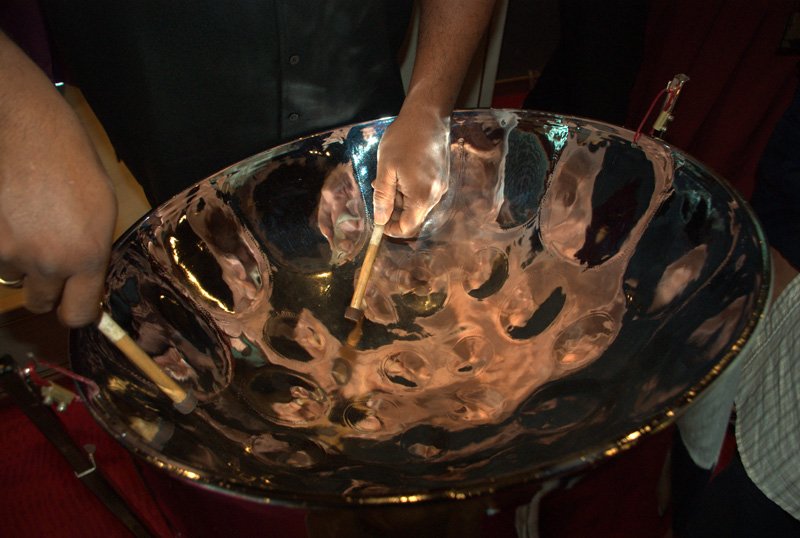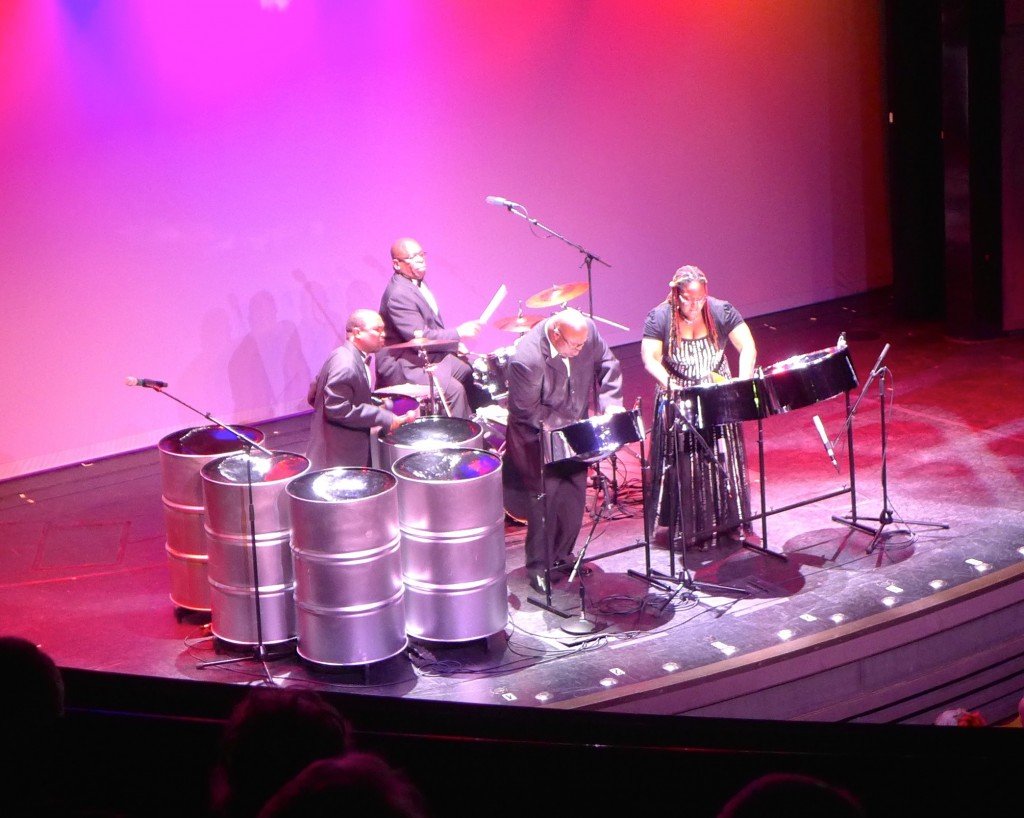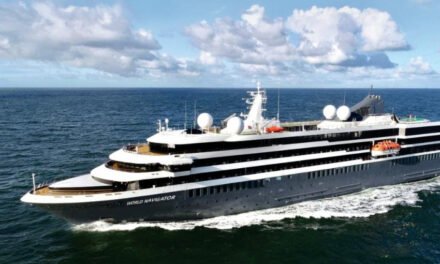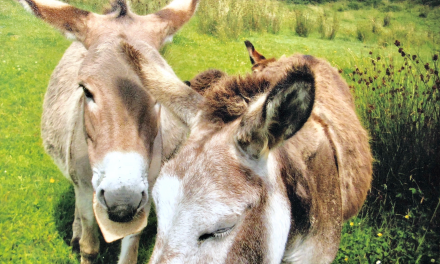
Island Magic: A Welcome Cruise Addition

My wife Maralyn and I have always loved cruising. During our most recent Caribbean trip on Holland America’s ms Eurodam, in March, 2015, we were delighted to watch the steel drum quartet from Trinidad known as “Island Magic.”
On a week’s cruise, during evenings after dinner, we usually plan to see two sessions of the ship’s singers and dancers. This time, we decided to take a fling and also see an unknown band, the Island Magic. We weren’t sure whether this was reggae or calypso. Either would be okay, though reggae wasn’t our first love, as Broadway-style singing and dancing were.
Out came the band quartet, in formal attire, three men and one woman. As we came to know later, the four were: Julian Gibbs, the leader, playing Instrument ”Bass – four drums”; Kerlanda Matthias, playing Instrument “Double Seconds – two drums”; Dereck Ayum, playing Instrument “Tenor – two drums”; and Michael Pamphille, playing Instrument “Drums – standard drums.”
Lo and behold, they did not play reggae or calypso at all. Instead, they covered a fascinating variety of popular and classical tunes. These included “Phantom of the Opera” and “Orpheus in the Underworld.” For their finale, they brought the house down with “William Tell Overture.” The Lone Ranger never sounded so good.
The next morning, we interviewed Julian Gibbs and listened to his interesting story. In Trinidad, most steel bands have more than a hundred members, but the demands of ship travel call for them to be as small as a limit of four. Most such Trinidadian musicians begin at an early age, as young as four or five. Gibbs, on the other hand, didn’t get involved with steel bands until age seventeen or so. He was trained as an accountant and employed for six years in the field, so he had to convince his skeptical parents when he wanted to pursue this music full time. Their support came reluctantly. Over the next twenty-five years, he has perfected his craft to the level it’s at today. You can enjoy a sampling on this video:
Gibbs described the other three members of his band. The woman, Kerlanda Matthias, is the newest member of Island Magic. She also started late, after working as an IT systems programmer for a number of years. In fact, she designed the group’s website. She has played her instrument for 15 years. Just as with Gibbs, her parents had to be won over about a fulltime music career.
Dereck Ayum, playing the Tenor, also didn’t start music fulltime until age 17. For him, as the preceding two, schoolwork had to come first. He has been with Island Magic and Gibbs for 15 years.
Finally, Michael Pamphille, the drummer, has played drums for over 30 years.
None of the four Band members can read or write music, and are self taught. Gibbs said he can listen to a tune and get the “feel” of all contributing instruments. They can master some songs in as little as 10 minutes. Classical pieces are more demanding and may take several hours. Now their repertoire includes over 400 songs. Gibbs claims, and I have no reason to doubt him, that once they have mastered a song, every time they play it, it will be exactly the same.
Gibbs started the Island Magic twenty-one years ago, although with different members than today. On a now defunct cruise line, they started as a poolside band, playing reggae and calypso selections. Then, Gibbs decided to add Broadway and classical collections. On a trial basis, they started doing evening shows, which continued on a number of top level lines: Commodore; Crown; Premier; Cunard; Costa; and our current line, Holland America. They have been with Holland America since 2008. Many passengers check with the cruise line to see on which ship they will be performing and book accordingly.
For several years, they performed at sea for eleven months out of the year. Now, since all four have families, they have tried to cut down cruise time to about six to eight months out of twelve. The time off they do take is in the summer so they can spend as much time as possible with their families.
Gibbs agreed that big money could be had in Atlantic City, Las Vegas and similar club sites. He is considering this step up for Island Magic. To perform in the mainland U.S., they would have to apply for work permits and fit in during the off-season.
In addition to talking with us about the group’s background, Island Magic provided a Q&A where they really took time to explain how the steel drums were made. They are called a “Steelpan,” and they are all made by hand. The process starts with an empty fifty-five gallon steel drum. The first step includes the bottom of the drum being stretched to form a concave shape. This allows space for the notes and is done with a sledgehammer with a shortened handle. The depth the drum is sunk depends on the type being made.
This is a detailed process, as next, templates cut in the shape of notes are placed on the stretched surface of the drum and outlined using a pencil. This ensures the notes are placed correctly and are consistent. Then the area between the notes is flattened more. For this, special tuning hammers are needed, which forces the notes to protrude a little and to take on a convex shape.
Grooving comes next, with indentations placed in the note outlines, using a small chisel-like instrument. It creates an area of “dead” metal around each note, which helps to keep notes from bleeding into each other. Larger notes are on the outside of the drum and smaller in the middle. Next is cutting the skirt (outside) when you determine how deep or tall you want the drum to be. This length makes a difference in the type of steelpan being made. Tenor and double tenor have the shortest skirts and cellos and bass would have longer skirts for echoing effect.
The drums are not done yet. The metal has to be tempered by rapid heating and cooling, which helps it hold the tuning. Then, actual tuning begins. After completion, a protective finish is applied to prevent rusting. Most commonly used are chrome plating, painting and more recently, powder coating. Finishing does not affect the sound. The drums are played with pansticks that have rubber at the end, which allows the sound to come out and not damage the drum. We appreciated getting the abbreviated lesson on making the drums.
In summary, listening to Island Magic perform and then finding out the backgrounds of these talented people represented one of the high points of our latest Holland America cruise.
You can hear Island Magic on our link or order their albums from their website http://islandmagicsteelband.webs.com. We want to thank Julian Gibbs for permission to share clips and images.







































